
The EFMD Business Magazine | Iss3 Vol.16 | www.efmd.org Recognising Outstanding Learning and Development Partnerships Excellence in Practice 2022
Excellence in Practice 2022
Global Focus
The EFMD Business Magazine Iss.3 Vol.16 | 2022
3
Excellence in Practice 2022
5
Randstad / London Business School
13
DNB / IMD
19
OCP / IMD / Africa Business School
27
Standard Bank / Henley Business School Africa


33
Atos / Harvard Business Publishing
39
Kuehne+Nagel / LIW
45
ACIAR / University of South Australia (UniSA) / Australian National University / ICRISAT
51
UK Fire and Rescue Services / Warwick Business School, The University of Warwick
You can read Global Focus in print, online and on the move, in English, Chinese or Spanish. Go to: globalfocusmagazine.com for these and an online library of past issues.
1 EFMD Global Focus_Iss.3 Vol.16 www.globalfocusmagazine.com
Contents
This 2022 Excellence in Practice awards round has again resulted in a wide variety of submissions in terms of global spread, client diversity (governmental, corporate and social profit) and supplier diversity (in-house L&D departments, business schools and alternative providers). While this variation is not necessarily reflected in the award-winning subset of cases, it truly enriched the debates of the jury and contributed to a privileged view of trends in L&D practices. As ever, we can only thank all applicants for formalising their experiences and for their readiness to share and discuss on the EFMD website, this Global Focus Supplement and the 2022 Executive Development Conference. We applaud the effort, throughout the last few challenging years, to continue to deliver with impact.

This year’s cases have shown an interesting multi-perspective on digitalisation: not only how organisations have adapted or their businesses have evolved due to technology, but also how their learning and development first went digital. External events, notably the pandemic, have played a key-role in the fast forward we have witnessed in this respect. But when looking into the set of practices documented this year, there are a few remarkable elements to explore. Let’s just examine some of them.
First of all, there are a number of instances where the use of technology has led to large(r)group interventions, bigger cohorts and even complete populations being addressed. One can only try to guess why. Is it because technology has enabled this or because this is more economical, with the need to maximise the recovery of costs? Or perhaps it is the desire to attract the attention and attempt to boost the morale of as many people as possible in these troubled times? Or did the (forced) leap forward in technical capability give us the extended reach we always wanted but hadn’t previously had the time or resources to fully explore?
Large volumes of participants or cohorts have also given rise to a growing spread and diversity of participants. Varying academic backgrounds, levels of seniority, career stages and functions; even mixing internal hires and external talents. Several formats addressing this heterogeneity were put in place in the sample of cases we received this year. Some worked using a funnel approach with minimal selection criteria at the start, but with each subsequent stage only made available to a smaller group – thus providing more
2
Excellence in Practice 2022 | Introduction
in Practice 2022
Excellence in Practice 2022 Introduction
opportunities for those who were truly motivated and engaged. Others worked with common offers intertwined with parallel programmes for different populations – combining technical and managerial talents for instance. Another format, made possible by the introduction of platforms, offered a common trunk and a portfolio of complementary content allowing for individual self-managed journeys.

Regarding diversity it is interesting to note that a growing number of cases deliberately looked to addressing gender diversity and/or strengthening local talent (the latter most notably in African situated cases).
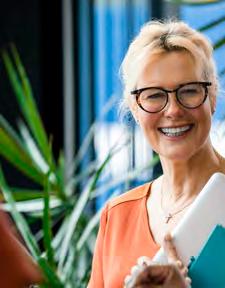
It is especially interesting to peruse the experiential or experimental practices throughout the documented projects where participants and teams are challenged to apply what they have learned to solve real-world problems, thus coupling individual learning and organisational change ambitions. Here again a variety of formats were used, from personal action plans and team projects to action-learning projects, and although not immediately evident, some went (partially) virtual on this.
Probably one of the greatest difficulties during contact-restricted times has been maintaining the social aspect of learning and development. How to build a learning community and talent network; how to create opportunities for peer-to-peer exchange, mentoring and coaching? There has been the need for accelerated learning in recent years to employ technological support in these matters e.g. for virtual action learning sets, video self-presentations, virtual coaching sessions, mentoring with seniors and experts from within organisations.
Both the experiential part as well as the social part of L&D interventions have undergone some forced experiments on going virtual i.e. digital. And it is probably these aspects which have provided an invaluable live lab of exploration, where we as professionals can utilise and carry forward our newly acquired skills into the future.
This is part of a wider debate, which started with the 2022 Executive Development Conference, where we can explore the continuing consequences of this digital first wave with people in organisations, as well as its implications on learning and development. We hope to see and hear from as many of you as possible and look forward to reading your submissions for the 2023 Excellence in Practice Awards.
3 EFMD Global Focus_Iss.3 Vol.16 www.globalfocusmagazine.com
Excellence
2022 Winners
Category: Organisational Development


Category: Ecosystem Development

Australian Centre for International Agricultural Research & University of South Australia (UniSA) & Australian National University & International Crops Research Institute for the Semi-Arid Tropics
“Transforming small irrigation farm businesses and their irrigator corporations from underperforming to sustainable business units”
SILVER
Category: Talent Development
Category: Leadership Development
UK Fire and Rescue Services & Warwick Business School, The University of Warwick “From heroic leader to adaptive leadership”
4
GOLD Randstad & London Business School “Accelerating organisational transformation through experimentation, engagement and empowerment” SILVER DNB & IMD “Building a culture of collaboration, through action learning. At scale”
GOLD OCP & IMD & Africa Business School “Beyond, an ambitious next-level talent development programme” SILVER Standard Bank & Henley Business School Africa “African Acceleration!” SPECIAL MENTION: China Construction Bank & HKU Business School University of Hong Kong “Data analytics programme – Empowering data leaders”
GOLD Atos & Harvard Business Publishing “Developing managers to lead confidently through dual digital transformation” SILVER Kuehne+Nagel & LIW “Culture transformation to drive performance in a changing world” SPECIAL MENTION: Liverpool University Hospitals NHS Foundation Trust & Liverpool Business School at Liverpool John Moores University “Leadership at Liverpool University Hospitals Foundation Trust”
GOLD
Excellence in Practice 2022 | Introduction
Randstad / London Business School

The power of experimentation in driving organisational transformation
How can a company make the goal of organisational transformation a reality?
Randstad, a company in the recruitment and staffing industry with 38,000 employees in 39 countries, can provide a unique response to this question based on its experience collaborating with London Business School.
Dating back to the 1960s, Randstad had built its reputation on trust and customer intimacy. This philosophy helped the company grow to become the global leader in the HR service industry. However, in recent years, the human resources space experienced significant changes due to technological advances.
In 2016, Randstad acquired Monster.com, a company that provides sophisticated recruitment and talent management capabilities. The acquisition underscored Randstad’s need to rapidly accelerate, embrace digital disruption and adopt new ways of operating. During that time Randstad CEO Jacques van den Broek and the company’s executive board introduced a new strategy called “Tech and Touch” and aligned on the goal to be number one worldwide in the industry.
This strategy embraces the full benefits of new technology without eroding a business model that greatly depends on personal relationships. To make the desired outcomes of the strategy possible, organisational transformation was required, involving:
In response to this, the executive team knew that a unique learning initiative was required.
“A big challenge for a decentralised company like Randstad is to get everyone on the same page,” said van den Broek. “If you don’t have your basics in order, it doesn’t make sense to innovate.”
Partnering to Create a Unique Learning Journey
Jos Schut, Randstad’s Chief Human Resources Officer, and his colleagues were responsible for introducing a learning experience that aligned to the desired behaviours required for Tech and Touch.
Randstad and LBS had a strong relationship that had developed over time. In 2016, Schut and LBS Senior Client Director Linda Irwin engaged in conversations on how a potential learning initiative could bring about the desired organisational transformation at Randstad. Months later, an RFP was launched and Schut met with several business schools. The conversations with LBS stood out. It quickly became clear that LBS and Randstad should partner together.
“This wasn’t just a transactional response to an RFP,” explained Irwin. “It was based on a strong relationship built over time that enabled LBS to understand the challenges, culture and context at Randstad.”
5 EFMD Global Focus_Iss.3 Vol.16 www.globalfocusmagazine.com
Excellence in Practice 2022

6 Excellence in Practice 2022 | Randstad / London Business School
in Practice 2022
Randstad / London Business School
Irwin carefully curated a cohesive faculty team that aligned to the company’s ambitious goals. From the outset, LBS and Randstad discussed a holistic focus on spanning new knowledge, mindsets and behaviours. Randstad expressed the importance of learning in the flow of work. In response, the LBS design team proposed a focus on positive psychology and experimentation to approach business challenges and opportunities.
Both parties aligned on the Transformational Leadership Programme (TLP), a nine-month experience launched in 2017 for senior leaders, designed to unleash organisational transformation at Randstad. It began with an inspiring launch to engage the senior leaders, with the CEO setting the strategic imperative for change and issuing a robust call to action.
After the week-long module at LBS, participants returned to their home countries and continued to work in teams to select one key experiment they would explore. TLP eventually culminated with experiment presentations at Randstad’s headquarters in Amsterdam.
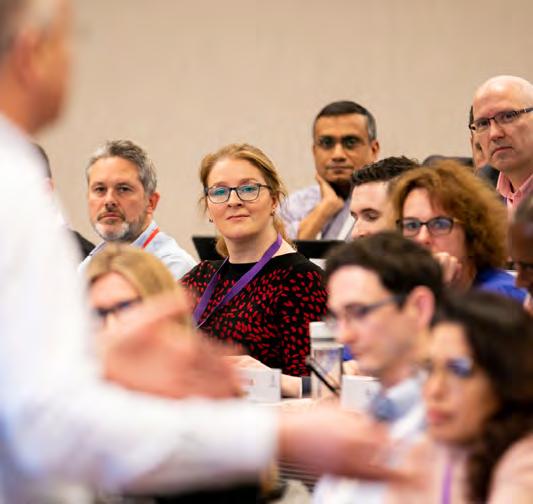
The executive team provided feedback and engaged in a dialogue during this event and then followed up after several months to ensure that the participants’ key actionable insights were being cascaded and embedded into markets and functions. See below for more details on the learning journey:
“We aimed for Randstad leaders to share their learning with others as part of the experiment experience and for that learning to be diffused across the organisation,” said Schut.
Each market brought its managing director and this person’s two direct reports. After the programme, these individuals shared the key insights with their teams. While this approach was impactful, it became apparent that the cascade process for a global company like Randstad needed to be accelerated.
Strategic alignment and a common language as a global company.
A move away from a top-down, hierarchical managerial style to one in which leaders elevate the performance of their people through engagement and empowerment.
Fostering a culture of curiosity experimentation, agility, innovation, and collaboration.
The executive team provided feedback and engaged in a dialogue during this event and then followed up after several months
PHOTO COURTESY RANDSTAD / LONDON BUSINESS SCHOOL
7 EFMD Global Focus_Iss.3 Vol.16 www.globalfocusmagazine.com
Excellence
Fig 1
Virtual learning setting the stage
• CEO launch Digital simulation,
• Learning content and pre-reading Diagnostic questionnaire
Leading for the future
3 days face to face at LBS
• New perspectives and digital disruption
• Experimentation (MVPS)
• The global leader
Virtual learning driving innovation
• Coaching and action learning sets
• Learning content ‘boosters’ Experimentation
Transformational leadership 3 days face to face at LBS
• Executing strategy Transformational leadership
• Collaborating for success
Transforming Randstad
• Continuing the learning journey
• Evaluating ROI and impact Ongoing coaching and experiments
• Showcase experiments results to CEO
Individual leadership coaching - supported by LBS coaches
2
over 60 groups and more than 2,500 participants have taken part since 2018. An estimated 5,000 individuals will have experienced LTDA by 2023
5000Thus, in 2018, LBS and Randstad worked together to launch Leading Transformation in the Digital Age (LTDA), a new digital version of the initial TLP experience. Its aim being to reinforce the behaviours associated with this new culture of agility, innovation and collaboration. LTDA enables TLP alumni to spread the messages of innovation and experimentation at a local level across a wider population of employees. TLP alumni played the role of mentors, facilitators, guides, sponsors and coaches. The learning journey is outlined in the graphic to the left.
LTDA launched in 2018, some 18 months prior to the onset of COVID-19. Randstad and LBS were already well ahead of the curve in the pivot to online learning.
Experimentation is a focus of the LTDA participant experience as well as a behaviour exhibited by the programme design team. As a result, over 60 groups and more than 2,500 participants have taken part since 2018. An estimated 5,000 individuals will have experienced LTDA by 2023.
“We had to experiment to find the right approach that would account for different market conditions,” said Howard Viney, LTDA Programme Director. “We agreed to run much smaller cohorts to be flexible and reflect the needs of each community. Content was adapted to the level of the audience, thus reaching a wider group across the whole organisation.”
Leadership conversations - triad and peer coaching groups
Digital content and learning boosters - business simulations, online learning and webinars
Experiment and MVP - support and challenge groups
Total duration of this phase of the learning journey = 11-12 months
8 Excellence in Practice 2022 | Randstad / London Business School
Fig
Excellence in Practice 2022
Randstad / London Business School
start here pre-module information
why transform?
in this module, you will explore the reasons why we must transform to take advantage of opportunities and overcome threats in a time of exponential change.
transformational leadership
in this module, you will discover a range of new ideas that will allow you to transform the way you lead to enable you to thrive in a volatile and uncertain environment,
leading change in this module, you will be challenged to think about how you lead, and offered ideas on how you can lead more effectively in a challenging business landscape.
strategic execution in this module, you will be given advice on how to improve your ability to successfully execute a strategy to achieve the maximum results for Randstad.
leading people through change (part 1) in this module, you will engage in a business simulation to put into practice some of the ideas you have encountered in the previous modules.
leading people through change (part 2) In this module, you will complete the business simulation and reflect on what lessons you can take backto help you transform your approach to leadership.

making it real in this module, we will share our experiences of the cascade journey so far and identify good ideas that can bring about transformation within Randstad.
preparing for action in this module, we will put into place an action plan to bring about both a personal and an organisational transformation.
Business challenges are intended to be very practical. In line with the philosophy of providing flexibility to match learner needs, business challenges can be individual, collaborative or based on small groups formed for the purpose of delivering a specific organisational outcome.
Impact
As a result of the learning initiative, there has been a demonstrable sustainable impact. Key financial results have been achieved. Randstad has moved up to #1 in the industry, increased win rates and received validation from financial analysts during Capital Markets Day March 2021.
The following is a snapshot highlighting some of the impact generated from the experiments.
Randstad and London Business School co-created a common language of leadership and a radical shift away from a top-down, hierarchical managerial style. Leaders now focus on elevating the performance of their people through engagement and empowerment and creating a culture of curiosity and
9 EFMD Global Focus_Iss.3 Vol.16 www.globalfocusmagazine.com
module 5 module 4 module 3 module 2 module 1 module 0 module 6 module 7 module 8 Fig 3
O.1
Randstad has moved up to #1 in the industry, increased win rates and received validation from financial analysts during Capital Markets Day March 2021

collaboration to drive performance. One of many examples of this is Randstad Sourceright (one of the company’s large global businesses). The executive team that went through LTDA in 2020 was inspired to recast the way Sourceright’s strategy would be developed. The organisation at large was brought into the process. As a result, there was:
• Establishment of a common language
• Engagement scores rose considerably especially in the empowerment category
• 2022 Voted Best Place to Work for first time by Glassdoor

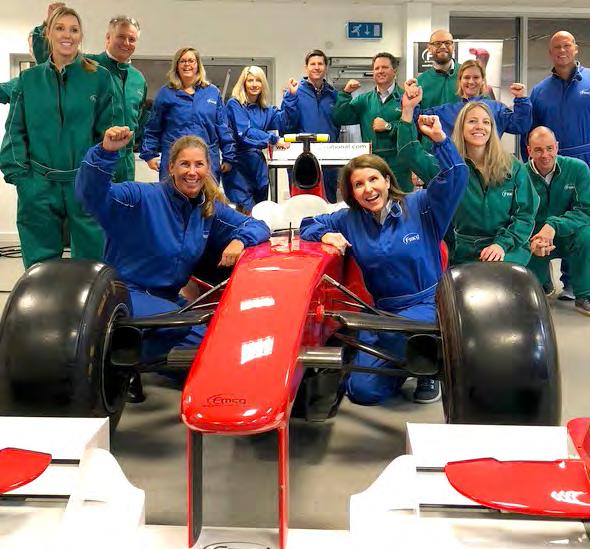
• 2021 Best financial results 65% over target
• 2021 Best revenue increase of 153% year on year
PHOTO COURTESY RANDSTAD / LONDON BUSINESS SCHOOL
10 Excellence in Practice 2022 | Randstad / London Business School
N
Excellence in Practice 2022
Randstad / London Business School
“Overall in our organisation we established a common language for change and this gave us an opportunity to clarify and articulate why digital transformation is needed and what it entailed,” said Renate Deken, Randstad Global Head of Learning and Development. “LBS supported us in the ‘how’ of digital transformation, introducing a new language of change. The impact was tremendous on an organisational and individual leadership level. It contributed to having valuedriven client conversations.”
Fostering a culture of experimentation, agility, innovation and collaboration has directly impacted business outcomes. For example, Paul Dupuis took part in TLP in 2018 when he was the Managing Director of Randstad India. He shared: “I can say with confidence that the remarkable transformation of Randstad India from a lagging, loss-making operating company into a top performer came directly as a result of the learning and actions born from TLP and LTDA. The title says it all – transformation. It was transformative for me as a leader and has been a game-changer for our company!”
“The programme has provided inspiration around reinventing ourselves,” concluded van den Broek. “The more you take people through such an experience, it becomes a vein that runs through the business.”
Through its Executive Education offerings, London Business School provides transformative learning journeys for ambitious individuals and organisations across the globe.
By serving as a trusted human partner in today’s technology-driven world of talent, Randstad helps people secure rewarding jobs and stay relevant in the ever-changing workplace.
LBS supported us in the ‘how’ of digital transformation, introducing a new language of change. The impact was tremendous on an organisational and individual leadership level

11 EFMD Global Focus_Iss.3 Vol.16 www.globalfocusmagazine.com
Belgium
Experiment: enhancing the customer experience
Impact
• Customer satisfaction scores increased by 15% in 4 months after experiment
• NPS scores from cents and talent rose by 100%
• Revenue growth of 10% in first year following experiment Successful scaling and cascade of experiment to 189 countries and 34 operating companies
India
Experiment: driving performance through experimentation in “no Job Boards Process” and engagement
Impact
17% increase in year on year revenue
• 40% increase in growth profit
• 111% rise in EBITA (earnings before interest, tax and amortisation)
USA
Experiment: reducing talent attrition

Impact
• Experimentation yielded 35 new innovative ideas San Francisco: Reduction in talent turnover from 76% to 26%
• Subsequent large financial savings Seattle: Attrition reduction from 40% to 30% in the same year
Japan
Experiment: fostering culture of empowerment and engagement
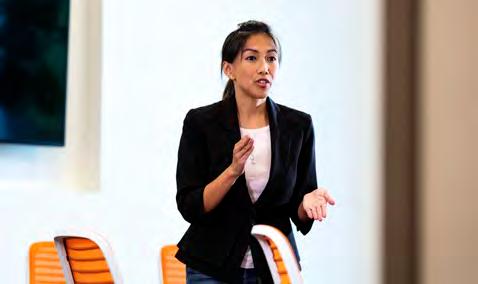
Impact
• Dramatic business turnaround Early 2022 results: best results ever on revenue
• Best results ever on year growth
Italy
Experiment: setting up a training partnership with automotive clients to address talent shortages in technical areas. This aligns to the idea that Randstad should be seen as a ‘pathway to jobs’ rather than just a recruiter.
Impact
• GP 300k Euros in first 6 months post programme
France
As result of 2 experiments Impact
• 300% increase in new candidates 12% increase in Premium Business revenue
12 Excellence in Practice 2022 | Randstad / London Business School
Fig 4
DNB / IMD
Designing for collaboration
The future is co-created – and in the financial services industry, so is the present.

Customers demand that service providers offer end-to-end solutions grounded in real-time data, trust, convenience and additional user benefits. A phone in the pocket is all it takes to keep a customer covered for the rest of their financial life. Of course, such solutions can only be developed by cross-functional, customer-centric, highly collaborative teams.
DNB’s Race 4 the future
In mid-2020, at the height of the onset of the COVID-19 pandemic, Norway’s largest bank DNB launched its new corporate strategy, titled RACE 4 THE FUTURE (RACE4TF). The path forward involved picking up the pace of innovation, maintaining a vibrant technology platform, and thinking and acting like a tech company in terms of customer experience, automation, working methodology, new business models, third-party collaboration, use of data and obtaining the right skills mix. Meanwhile, the health crisis accelerated the current trends of digitisation and new ways of working. The only way to deliver on RACE4TF was to pull together as one company. According to Kjerstin Braathen, DNB’s Group CEO: “As One DNB, we are stronger than the sum of our functions and business lines. To meet customer expectations, we already work as teams, not as individuals. Our next challenge is to tear down the walls between departments, business units and hierarchies.”
RACE4TF put forward three values that would support its execution:
• Curious: continuously learning from one’s experiences
• Bold: the conviction that the best ideas and solutions are within reach
• Responsible: proving capable of change. Creating value in a sustainable way. Making customer experience and technology an integral part of the organisation and embracing its core values meant that DNB had to find new ways to learn and work together. In a tech-driven bank, cross-functional teams – whose members included marketers, data analysts and security specialists – had to operate with speed, agility and richness of customer insight. Collaboration, transparency and sharing needed to become the teams’ lifeblood.
Action learning through simultaneous shadowing, at scale
DNB teamed up with IMD, a business school with whom the group had a strong history of co-designing and delivering tailored and impactful programmes. From the outset, the two partners recognised that telling people to collaborate was doomed to failure. Instead, the approach they agreed on was to design for collaboration, which was to take place simultaneously and at a robust scale. Thus, DNB and IMD launched 40 small coaching groups in a single, massive learning cohort of 230 leaders. The goal was to accelerate the programme’s momentum, but also to ensure that all participants were in step with each other and spoke the same language – which is often a challenge in a cohort-by-cohort approach.
13 EFMD Global Focus_Iss.3 Vol.16 www.globalfocusmagazine.com
Excellence in Practice 2022

14 Excellence in Practice 2022 | DNB / IMD
Excellence in Practice 2022 DNB / IMD
RACE 4 THE FUTURE
Pair shadowing – a technique of quietly observing, listening and providing feedback to a colleague across business units – was chosen as the programme’s central vehicle of delivery. Participants shadowed a peer from another department for half a day. Unfamiliarity (with another person’s function) served as a strength, as it yielded insights into patterns of organisational behaviour. Although conducted online rather than face to face, because of COVID-19 restrictions, the exercise was enriched with a trust-building pre-shadowing call as well as subsequent debriefs, shadowing journals and coaching. Ultimately, it empowered learners to tackle four main collaboration barriers:
• Practicing silent listening
• Building empathy for other functions’ challenges
• Freely giving and receiving feedback
• Crafting win-win solutions, rather than zero-sum arrangements.
Combining individuals’ self-awareness of collaboration strengths (“I”) with these pair observations (“You”) and big-picture discussions conducted within larger groups (“We”), DNB and IMD worked to assemble these perspectives into a shared view of One DNB. In this final phase, the partners sought to embed the learnings within the organisational fabric and processes.
Delivering on the collaborative promise of action learning
According to IMD’s impact survey, administered 11 months after the programme’s completion, 72% of respondents believed that the programme’s organisational impact was high. In the words of Katrine Kalelic, DNB’s SVP of Leadership & Talent Development: “The programme has helped us build a leadership culture that amplifies our energy and potential, all in the service of customers. We are now in it together, as One DNB.”
 Create the best customer experiences, ensure compliance, and deliver on our financial targets
The Customer Race
CURIOUSBOLDRESPONSIBLE
The Efficiency Race The Investments & Deposits Race The Payments Race
Create the best customer experiences, ensure compliance, and deliver on our financial targets
The Customer Race
CURIOUSBOLDRESPONSIBLE
The Efficiency Race The Investments & Deposits Race The Payments Race
15 EFMD Global Focus_Iss.3 Vol.16 www.globalfocusmagazine.com
Fig 1
11 months after the programme’s completion, 72% of respondents believed that the programme’s organisational impact was high
To date, the impact has included, first and foremost, the rise of a shared understanding of how I, You and We fit together as One DNB. It has broken down barriers between different functions and business units. It dispelled misconceptions about other functions’ roles and work practices. Throughout, the programme stimulated participants to live the values underpinning DNB’s RACE4TF strategy:
• Curious: asking questions (both of themselves and to peers outside their function); examining how questions are formulated; observing how managers apply different leadership styles in different contexts
• Bold: giving and receiving candid feedback, thereby encouraging learning across organisational boundaries; asking for and offering help; piecing together a variety of perspectives

• Responsible: recording and absorbing learnings and making sense of them in one’s own environment; committing to roadmaps and action plans aimed at process optimisation; modifying behaviours and creating long-term habits for oneself, for the team and for the entire company.
Since the programme’s completion, many participants have been going the extra mile: Shadowing a coworker for more than half a day; shadowing more than one colleague; agreeing to shadow on a regular basis; and going for “walks and talks”, where possible, to prepare or to debrief. As one of the participants described:
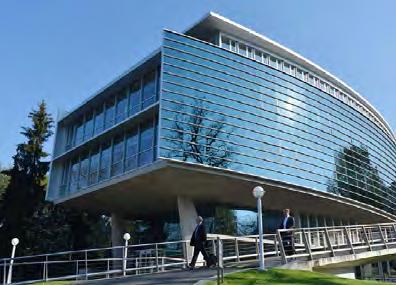 PHOTO
PHOTO
16 72%
Excellence in Practice 2022 | DNB / IMD
COURTESY DNB / IMD
Excellence in Practice 2022
DNB / IMD
“These colleagues are all from different business units. I can share with them my issues, problems, and thoughts. This will be the group that I can draw on as my personal safe space for the rest of my career with DNB.”
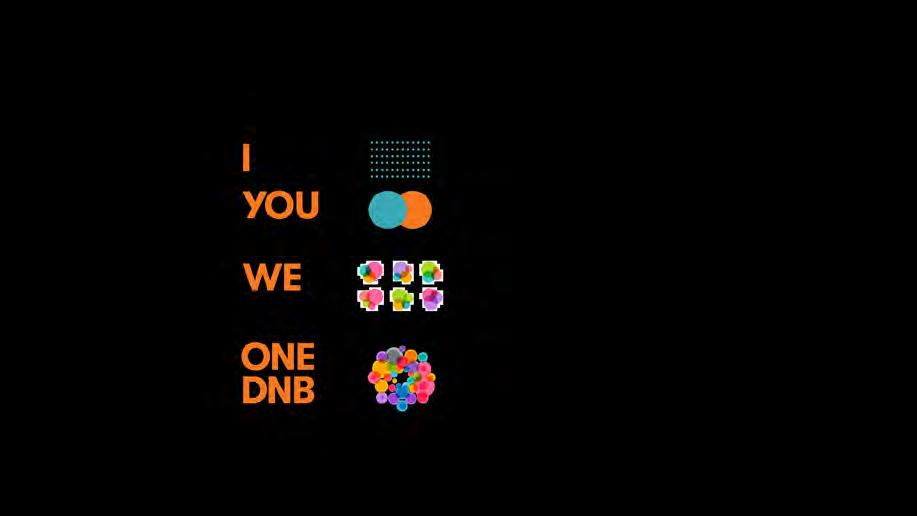

Lessons learnt
Action learning creates high impact, but it also comes with risks and tradeoffs. Compared with other learning and development methods, it can be costly and time-consuming. Particularly when executed at scale, as DNB and IMD did, the importance of factors such as a well-thoughtout design, systematic feedback, leveraging coaches, and clearly framing the difference between satisfaction and impact becomes enormous. This is because the margin of error in misjudging an audience or making last-minute adjustments is virtually nil.

17 EFMD Global Focus_Iss.3 Vol.16 www.globalfocusmagazine.com
Action learning creates high impact, but it also comes with risks and tradeoffs. Compared with other learning and development methods, it can be costly and time-consuming


To mitigate some of these tradeoffs, it is important that learning providers address issues of real significance to the organisation; secure longer-term commitment from individual leaders as well as from the company; and understand that meaningful change and growth are unlikely to occur without initial pain and resistance. The shadowing technique would never have taken root within the company if one or both of the learning partners had given in to the initial anxiety among participants, accustomed to many years of formal, functional training. Through interventions from the coaching team and individual conversations with each participant, the ambivalence and concerns gradually gave way to a sense of curiosity and excitement about the shadowing method.
Today, 91% of participants see that the programme has strengthened the way they collaborate across DNB, and 86% report that they have applied and transferred the learnings to their own working context. As IMD Professor Ina Toegel says, “DNB made a bold choice by opting for an unconventional learning design. It made the learning journey more challenging but ultimately much more impactful.”
 PHOTO COURTESY DNB / IMD
PHOTO COURTESY DNB / IMD
18 Excellence in Practice 2022 | DNB / IMD
“Beyond” An ambitious next-level talent development programme

How can organisations energise and accelerate a long-term transformation initiative? This was the challenge facing Dr. Mostafa Terrab, Chairman and CEO of OCP, in 2018. The Moroccan-base phosphate mining and fertiliser firm had exclusive access to 70% of the world’s phosphate reserves and was already a decade into a far-reaching transformational journey to shift to its next S-curve. The company was evolving from a mining and commodity fertiliser company into a player offering customised and farmer-centric agricultural solutions by 2030.
OCP’s three-pronged transformation involved doubling mining operations, tripling fertiliser production and reducing costs. Its next investment phase prioritised shifting from fertilisers to farmer solutions and diversification into P-related byproducts (Figure 1).
To realise its strategic shift OCP needed to explore new business models that would help it diversify beyond mining and fertilisers into businesses that focused on phosphate-related byproducts while better exploiting existing operations in mining and fertiliser production more efficiently and effectively.
IMD and the Africa Business School (ABS) were the perfect partners to lead the next step in its transformational journey. IMD conducted a diagnosis exercise – multiple stakeholder interviews, visits to key industrial sites, and a series of workshops – that resulted in the
categorisation of the company’s ongoing initiatives into three groups: (1) building capabilities, (2) exploitation, and (3) exploration. This helped the partners understand the knowledge and skills OCP needed to develop in order to accelerate its ambitious transformation strategy.
During the diagnosis, IMD identified six streams on which OCP should work. It advised OCP to focus on the Leadership & Change and Talent streams to help its talent develop the necessary skills – operational efficiency, problem solving, project management, building leadership capabilities, and increased customer understanding and strategic thinking – to accelerate all six streams.
In addition, IMD recommended a pedagogic approach alternating academic and experiential learning to:
1. Develop OCP’s ambidexterity to exploit its phosphate operations efficiently and explore emerging opportunities to diversify into phosphate-related byproducts.
2. Focus on capacity building in domains such as innovation, digital capabilities and customer- centricity.
3. Expand leadership and change capabilities and talent.
Based on the diagnostic results, ABS, IMD and OCP co-created the talent development programme Beyond to accelerate OCP’s shift to the next S-curve.
OCP
IMD / Africa Business School
19 EFMD Global Focus_Iss.3 Vol.16 www.globalfocusmagazine.com
/
Excellence in Practice 2022

20 Excellence in Practice 2022 | OCP / IMD / Africa Business School
Business School
• Phosphate Rock Solutions
• Farmer Solutions
• Diversification in Chemical Specialities
• Sustainable Impact
• R&D, Learning & Academia
OCP set an ambitious agenda
From the outset, the chairman wanted a talent development programme to quickly develop 400 employees, both internal and new hires, and then to scale it to all OCP employees to ensure smarter and faster execution of OCP’s strategy. His goals were to:
• Embed participants with an industrial and customer culture
• Develop skills and provide the necessary methods and tools to build critical thinking and solve problems
• Create ambidextrous change agents able to challenge the status quo and shape the future of OCP by leading ethically and responsibly.
21 EFMD Global Focus_Iss.3 Vol.16 www.globalfocusmagazine.com
OCP / IMD / Africa
Excellence in Practice 2022 1. Strategy 5. Leadership & Change 6. Talent 2. Innovation 3. Digital 4. Customer centricity Office Chérifien des Phosphates Rock & Acid 1920 1965 1980 1984 2006 2008 2010 2015 2017 2018 2025 Standard Fertilisers Customised Fertilisers Multi-Business & Innovation Based Growth Maintaining our lead by preparing for the paradigm shift Launch of SAFI chemical platform Launch of JORF LASFAR chemical platform New Management 3rd S-curve “Hacking Phosphate”
Phosboucraa JESA OCP UM6P Fig 1: OCP’s ambitious 20-year transformation programme Fig 2: Overview of IMD and OCP’s work streams
70%
Beyond:
Developing talent with academic & applied learning to accelerate OCP’s transformation and shift to its next S-Curve1
applying learning to 44 projects related to OCP’s strategic initiatives
30%
foundational academic learning
1 2 3 4
Academic Learning
Business fundamentals
Action Learning
Projects related to 21 of OCP’s exploitation strategic initiatives
Academic Learning
Strategy execution Customer centricity
Action Learning
Projects related to 23 of OCP’s exploration strategic initiatives

To deliver Beyond, the team
• Developed an innovative recruitment process for internal and external talent (from the Moroccan diaspora) for Beyond.
• Co-designed the learning journey and developed the programme’s communication strategy
• Coordinated with initiative sponsors to select and define the strategic initiatives that formed part of the on-the-job learning and selected the business coaches.
Beyond classroom learning: Interweaving off-the-job and on-the job learning … Despite Covid, the Beyond programme helped OCP transform and accelerate OCP’s shift to the next S-curve. A key to its success was tightly linking participants’ action-learning projects to 44 of OCP’s already existing strategic initiatives, while addressing its need for new capabilities, such as customer-centricity, and digital and collective intelligence. Participants alternated “off-the-job” academic learning with “on-the-job” action learning projects. (Figure 3).
PHOTO COURTESY
Fig 3: Beyond programme: Interweaving of theory and practice
22 Excellence in Practice 2022 | OCP / IMD / Africa Business School
OCP / IMD / AFRICA BUSINESS SCHOOL
OCP /
/ Africa Business School

Orchestrating the transformation is above all a change in the mindset and learning philosophy of the Group, putting talent at the centre
Dr. Mostafa Terrab, Chairman and CEO, OCP Group
23 EFMD Global Focus_Iss.3 Vol.16 www.globalfocusmagazine.com
IMD
Excellence in Practice 2022
UNIT 1 Problem design, problem solving, decision making UNIT 10 Strategic thinking UNIT 11 Strategy Execution UNIT 12 Building customer intimacy UNIT 13 Generating profitable revenue UNIT 14 Open mindset UNIT 15 Business communication UNIT 16 Agro-Africa learning expedition (canceled) UNIT 4 Design thinking UNIT 6 Leading teams UNIT 5 Digital transformation and digital operating model UNIT 3 Mastering project management toolbox UNIT 2 Leading self Off-the-job 1 On-the-job 1 | Off-the-job 2 Approx. 12-month industrial project Approx. 6-month project or two 3-month projects September 2019 December 2019 February 2021 70% of the curriculum: On the job learning30% of the curriculum: Off the job learning September 2021 Off-the-job 3 BEYOND liVe (alternance) On-the-job 2 Evaluation & Feedback Evaluation & Feedback UNIT 7 Field VSM analysis UNIT 8 Basics in operational research UNIT 9 Real options and strategic investment decision making PHOTO COURTESY OCP / IMD / AFRICA BUSINESS SCHOOL Fig 4: Beyond programme overview
OCP’s Strategic Initiatives
12 months
(2 initiatives × 6 months)
(1 initiative × 12 months)
Mobilisation of
50+ Initiative Leaders
30+ Sponsors
20+ Business Coaches
21 Exploitation
Industrial Operations, Industrial & Digital Transformation (e.g. stock to port transformation wave)
Industrial Operations, Ecosystem Development Industrial Operations, Digital Backbone & Fundamentals (e.g. water consumption optimisation)
• Industrial Operations, Sustainability Digital Office
• Performance Management
• Industrial Development
23 Exploration
Industrial Exploration Performance & Operational Backbone
Sustainability Performance Management
• Sales Innovation
• Strategy & Business Development
• Industrial Development Human Capital
• Digital
6 months
(1 initiative × 12 months)
(2 initiatives × 6 months)
Mobilisation of
20+ Initiative Leaders
20+ Sponsors
20+ Business Coaches
Participants began the programme with the first, six-week off-the job phase. They built up a foundation of academic learning in complex problem-solving, operational research, project management, digital transformation and leadership (Figure 4). Later modules exposed participants to theory and tools focused on exploring new products, markets and business models.
On-the-job assignments were interwoven throughout the programme. During these phases, groups of two or three participants were assigned to projects related to OCP’s already-existing strategic initiatives. The first phase focused on 21 exploitation-related initiatives, enabling participants to develop a deep understanding of the company’s products and production processes. In contrast, the second phase concentrated on 23 explorationrelated initiatives (Figure 5).
On-the-job projects were sponsored by high-level OCP executives; participants were supported by business coaches throughout the projects. During these learning journeys, they applied frameworks, project management techniques and their insights to solve OCP’s industrial challenges by: scoping the projects, defining objectives and governance structures; applying problem-solving methods to define the problem, explore different stakeholders’ perspectives and generate hypotheses on how to address the problem; synthesising their insights into recommendations; and, finally, presenting to initiative sponsors. The business coaches also provided individual and group feedback (Figure 6). The projects offered valuable, practical experience that complemented academic learning, while developing the leadership skills, teamwork, managerial tools and the behaviours and attitudes needed by OCP’s future leaders. They culminated in a set of project-specific recommendations to improve OCP’s performance and competitiveness.
Fig 5: On-the-job projects applied to 21 exploitation and 23 exploration initiatives
24 Excellence in Practice 2022 | OCP / IMD / Africa Business School
Excellence in Practice 2022
OCP / IMD / Africa Business School
Jan Feb MarchApril
Plan Explore Develop and do
May - Dec Jan Reflect
Define problem
• Break problem into component parts
• Understand stakeholders & context
Collect data
Conduct interviews
Initiative launch
Scope & priorities
• SMART objectives Governance
• Planning and Logistics
• Focus analysis Generate Hypothesis
First off-the-job evaluation(Feb)
Unit 7 VSM analysis
Prepare insights
Synthetise and drive to insights
Lead sponsor meeting
• Story line
• Get upstream buy-in Communicate Call to action of sponsor
First on-the-job evaluation (April)
Second off-the-job evaluation (July)
Second on-the-job evaluation (Jan)
• Brainstorm & recommend options
Iterate delivery options
Study organisational structure
• Risk analysis and mitigation plan
Unit 8 Analytics
Unit 9 Intro to operation research
On-the-job Kick-off
• Initiative leader onboarding by IMD
Strategic initiative presentation Meeting of all stakeholders
Fig 6: On-the-job learning journey
To drive high impact
E
Launch pilot
• Implement decision Knowledge transfer
Create learning pulse
• Final presentation to sponsors Reflect and Synthesise learnings
• Additional Readings
• Knowledge management
EvaluationOff-the-job
Business impact
Beyond’s impact on participants, OCP’s business and its organisation was so significant that OCP not only launched a second cohort but also created a separate programme – Learnin’Pact (launched in 2022) – to mainstream Beyond’s pedagogical approach to all OCP employees.
Beyond participants spent some 500 hours on face-to-face, online and extracurricular learning activities; they were assessed throughout the journey on both acquired competencies and individual leadership behaviours shown throughout the on-the-job projects to deepen the link between theory and practice. This helped participants understand group dynamics, their own strengths and weaknesses, and the required mindset and capabilities needed to further contribute to OCP as future leaders and change agents.
Thanks to Beyond, OCP helped accelerate progress on 44 of OCP’s strategic initiatives, as well as the codification and transfer of how OCP functioned (Table 1). For example, their contribution to the transformational programme for Industrial Operations was critical in cutting operating expenses by 16% and increasing production capacity by some 10%.
Organisational impact
After 18 months, OCP circled back to its original ambition to provide a programme for a wider group and decided to extend the concept of interweaving academic and action learning to the entire organisation. As a result, ABS, IMD and OCP co-created an innovative, online programme, Learnin’Pact, that was launched in
25 EFMD Global Focus_Iss.3 Vol.16 www.globalfocusmagazine.com
Dec Kick off A B C D
F
Strategic Initiative NameDescription
Stock to port transformation wave
Improve Industrial Operation's cost & capabilities
Fertiliser cost wave (2 teams) Reduce the cost price of fertilisers
PAP cost wave
Sulfuric acid cost wave
Benguerir mining cost reduction
Khouribga mining cost reduction (2 teams)
Optimisation of Water and water vapor consumption Optimisation of phosphate and sulfuric acid
Identify the root causes of the imbalance of sulfuric acid production and optimize capacities
Consolidate on going cost reduction initiatives and identify new ones
Reduce mine operational expenses of Khouribga, the largest phosphate mine in the world
Key Impact Measures
Increased:
• Loading capacity
• Speed
Decreased expenses compared to 2019 base
Decreased cost of goods sold
Increase in the daily production capacity
Annualized gains
Reduced washing and drying plant Focusing on reducing 4 main costs of extraction:
• Gazoil
• Spare parts
• Explosive and • Tires
Optimisation of energy and water
Gantour logistic expenses rationalization
Industrial standardization
Fluorine valorization
Improve energy and water resource management
Increase flexibility of the value chain to better meet increasing customer demand in terms of volume and quality while optimizing the transport cost
Understand the impact of industrial standardization and what is the best strategy for OCP
Build a Common vision about AHF production within OCP Devise a go-to-market strategy Draft the roadmap for AHF production
Table 1: Examples of key impact measures on OCP’s exploitation strategic initiatives
early 2022. The innovative new programme offered all employees the possibility to build capabilities and contribute to OCP’s transformation. Beyond also spurred a fundamental change in OCP’s human resources, which evolved from a functional organisation to being business partners advising on learning. HR now promotes lifelong learning, connects with the ecosystem, manages the pipeline of contributions to strategic initiatives, identifies developmental opportunities, analyses learning needs and sources new development content from UM6P or other partners. Managers encourage and support employees in their development while translating the group strategic priorities into specific initiatives for their department.
Energy savings Decreased water cost
Reduced operating expense Instilled cost culture in the field
The financial results of industrial standardization implementation confirm the opportunity for OCP to go forward with savings on project duration, engineering cost and failure and warranty costs
Performed market dynamic analysis on three axes : climate, customers and competitors
Financial performance is encouraging and a new structure has been created
National impact
Beyond contributed to Morocco’s brain drain reversal by bringing 21 qualified Moroccans back into the country. It also helped accelerate the development of ABS. Its innovative pedagogy – the mix of action and academic learning – is currently being applied in a number of degree, certificate and doctoral programmes. Finally, it gave ABS the opportunity to experiment with implementing a partnership approach, interweaving theory with on-the-job action learning and using business coaches. In more than two decades of executive education, I have not seen a learning design with such a wide impact. It affects not only individuals, but the entire organisation as well as the community. This is a realisation of IMD’s purpose to develop leaders who transform organisations and contribute to society.
Bettina Büchel, IMD Professor of Strategy and Organisation
26 Excellence in Practice 2022 | OCP / IMD / Africa Business School
Standard Bank / Henley Business School Africa
African Acceleration
The brief was ambitious: to design a unique and bespoke Pan African programme specifically tailored to ensure a strong pool of internal successors to senior roles in-country across 14 African nations, ensuring Standard Bank remained true to its transformation strategy.
The programme, designed by Standard Bank and Henley Business School Africa, was called Acceleration and formed part of the Bank’s future-ready transformation strategy to grow the organisation beyond banking, and into a platform business. It involved acting on the decision made by Standard Bank’s executive team, to invest in the succession pool and talent pipeline in the many African countries in which it operates.
Traditionally, the Bank had not hired or promoted internally for key in-country senior leadership positions – the eventual incumbents often being expats or external appointments. Invested effort was also required to improve on the gender split at senior levels, explains Mei-lene Els, the programme’s key driver and Senior Learning Partner for Business and Commercial Clients (BCC) Segments at Standard Bank. “The view was not only to accelerate our leadership muscle, but to build a pipeline that would continue to grow and develop in a sustainable way for the next five years.”
Henley was well known in the Standard Bank environment for being agile, innovative and impactful, making the business school an obvious primary partner in the co-design and rollout of the Acceleration journey.
The partnership between the two institutions began in 2015 and has grown to the extent that Henley works across many of the Bank’s business units, delivering more than 25 customised accredited and non-accredited programmes.
“We wanted a programme that allowed the delegates to be vulnerable and to be comfortable with ambiguity and uncertainty. We wanted these senior executives to be learners on this journey, giving them permission to be curious and to learn together. We built in some fun – essential for creativity (and attendance!),” states Linda Buckley, Executive Education Director at Henley.
14a unique and bespoke Pan African programme specifically tailored to ensure a strong pool of internal successors to senior roles in-country across 14 African nations

27 EFMD Global Focus_Iss.3 Vol.16 www.globalfocusmagazine.com
Excellence in Practice 2022

28 Excellence in Practice 2022 | Standard Bank / Henley Business School Africa
Excellence in Practice 2022

Standard Bank / Henley Business School Africa
This learning environment would enable the delegates to put theory into practice in their own unique context, transferring learning from contact sessions to their own lived reality. We understand that adults need to unlearn certain behaviours if they are to establish new and more effective practices and we hoped they would reflect on these as key lessons challenged their thinking patterns and ways of being and doing. “The very things you think you know as a leader are often the stumbling blocks that prevent you from learning and accelerating,” says Els.
As part of the programme design five contact blocks were devised, incorporating themes identified for the growth and development of African future-fit leaders, to be facilitated by best-in-class providers and the bank’s own experts, explains Buckley. “Our role was to seamlessly direct and integrate the programme while holding eight other providers and the internal banking experts, ensuring a wellconstructed learning journey, tailor-made for these learners.”
Henley’s role was to integrate the teaching and learning experience, allowing the journey of five ‘classroom’ content blocks to feel seamless and holistic, coaching the delegates on their design-thinking projects, and managing the formative learning by way of reflective practice.
In March 2020 an unexpected twist resulted in South Africa and most of the other African countries moving into a strict lockdown because of COVID-19. This necessitated all providers to upskill the relevant faculty to provide and deliver the content blocks on a virtual platform across different time zones. It was a game changer for the programme.
Acutely aware that a large percentage of adult learning resides in the social domain, in being together and learning with and from each other, Standard Bank and Henley had to work quickly to create a valuable learning experience for busy, senior people in various geographies, across three time zones, in a ‘two dimensional’ fashion.
40On 6 July 2020, where the 40 delegates were informed of all major milestones and expectations, including the programme timeline, key deliverables and high-level content per block
29 EFMD Global Focus_Iss.3 Vol.16 www.globalfocusmagazine.com
They made it happen and a virtual launch took place on 6 July 2020, where the 40 delegates were informed of all major milestones and expectations, including the programme timeline, key deliverables and high-level content per block.
At the launch, Buckley advised delegates that the programme would test their long-held orthodoxies, allow for uncomfortable dialogue with peers, challenge the notion of leadership on a continent filled with both adversity and potential, and encouraged them to open their minds to divergent thoughts such as, ‘what if?’ and ‘how might we?’


There was obvious buy-in from group executives as well as from the leaders in the various countries. This highlighted to all the level of importance placed on the programme and inspired delegates to be present, to give and to collaborate.

30
Excellence in Practice 2022 | Standard Bank / Henley Business School Africa DIAGRAM COURTESY STANDARD BANK / HENLEY BUSINESS SCHOOL AFRICA
Excellence in Practice 2022

Standard Bank / Henley Business School Africa
The Acceleration programme ran during a particularly difficult time in global history – many told of deaths in the family and in work teams, lack of access to key tools in their countries, such as internet connectivity, workload increases due to staff illness and retrenchments. “We had to remain empathetic and cognisant of life challenges,” says Dr Puleng Makhoalibe, Programme Director.

Despite the obstacles all 40 delegates remained engaged and committed throughout. “We weren’t presenting a programme to them. We were shaping it with them. We brought to it what we believed the delegates needed and, collaboratively, we either added, extracted or built as we progressed, in an agile fashion. Throughout the journey we pivoted and kept it relevant,” said Dr Puleng Makhoalibe.
Prework was required ahead of each content block and reflection and application activities during the weeks between sessions. Delegates were required to use their own contexts as the learning incubator and apply theory to practice in real time, with the assistance of business coaches, the programme director and faculty.
Powerful stories were shared upon their return to subsequent content blocks, which is often where the deepest learning takes place.
“The two cohorts also attended a two-month Cambridge online digital transformation programme with 150 delegates from across the globe, to ensure international exposure. Two of the Acceleration delegates were named top students on this programme,” says Els.
The Acceleration initiative was judged by the Bank to be highly successful as a PanAfrican initiative. Following the programme 13 of the 40 delegates have been promoted into senior leadership roles: 40% of these are black women. Those who were not promoted were, by virtue of a restructure, moved into relevant lateral roles or newly created positions.

31 EFMD Global Focus_Iss.3 Vol.16 www.globalfocusmagazine.com
Although a small percentage of delegates resigned from the business, the Bank considers these ‘regrettable losses’. “What we have done is to make [those delegates] more marketable, enabling them to add value to the industry across the continent,” says Els.
“If an employee moves to another organisation in Africa, we are still living up to our commitment to grow the continent. The Bank’s commitment has always been bigger than itself,” she explains.

Powerful stories were shared upon their return to subsequent content blocks, which is often where the deepest learning takes place
Feedback from delegates focused on programme rigor and intensity. “The programme is deep but wide at the same time,” says Makhoalibe. “I believe the delegates left the programme with answers as well as with quality questions, and a sense of curiosity as to how this would unveil, saying – ‘as a leader, I need to have the confidence to think for myself instead of seeking the counsel of others’.”
Each delegate had been exposed, intentionally, to the many topics identified as key to the growth of a future-fit African leader – among them, being a global thinker with a growth mindset, an agile leader able to pivot when change is required, a leader able to understand, internalise and teach others the key tenets of the platform business, an authentic leader able to harness cross-cultural teams and utilise the strengths in difference, and a collaborative, vulnerable leader able to ask the right questions, and feel comfortable with ‘not knowing’.
In addition, they had created a powerful network, a community of practice – friends and associates they could call on for advice or to share stories. As alumni they are tasked with paying forward lessons learned and ensuring their own teams are richer for their experience.
“The impact of what we discovered was greater than we could ever have imagined,” says Els. “We no longer had to look for that talent because that talent was ready and the pipeline was strong.
32 Excellence in Practice 2022 | Standard Bank / Henley Business School Africa
2022
 Atos / Harvard Business Publishing
Atos / Harvard Business Publishing
Developing Managers to Lead Confidently Through Transformation
Atos, a global leader in digital transformation, helps its clients navigate through all aspects of digitalisation, including cybersecurity, cloud and high-performance computing, and decarbonisation initiatives.
In 2018, Atos launched a complex dual transformation strategy. The company began transforming its own internal processes and competencies through digital technology while simultaneously guiding customers through the same changes.
Atos recognised that managers are a strategic lever for change and transformation. However, most managers came into the role based on technical skills and had received little to no training on how to lead individuals and teams. As a result, teams generally lacked confidence, avoided risk, and resisted change.
To overcome these challenges, Atos focused its transformation on two key areas. One, its global workforce needed to rapidly upskill on the most in-demand technical skills. Two, its managerial ranks needed a broader range of leadership competencies than had previously been required.
Managers are a Strategic Lever for Change
Atos partnered with Harvard Business Publishing (HBP) to co-create Leading in the Digital Age (LIDA,) a global initiative that dramatically strengthened this population’s leadership capabilities. Through development, Atos managers better understood the disruptive environment in which they operate and how to lead strategic initiatives accordingly. They developed the skills to become more consultative partners to their clients, to inspire and motivate diverse individuals and teams, and to improve team collaboration and employee engagement overall.
1500The fully virtual, in-role LIDA programme reached the entire population of approximately 1,500 managers through large, globally mixed cohorts
33 EFMD Global Focus_Iss.3 Vol.16 www.globalfocusmagazine.com
Excellence in Practice

Excellence in Practice 2022 | Atos / Harvard Business Publishing 34
Atos / Harvard Business Publishing
In 2018, Atos launched a complex dual transformation strategy. The company began transforming its own internal processes and competencies through digital technology
Developing Mindset and Skillsets
HBP’s best-in-class design approach created a learning experience that addressed Atos’ most urgent priorities. A comprehensive needs assessment identified the need to address both mindset and leadership competencies. While culture change was not part of the original scope of the initiative, it emerged as a key theme of the needs analysis.
Empowering managers to evolve the culture of the organisation became a central aspect of LIDA. Specifically, LIDA delivered the tools managers need to embrace a new way of leadership – to become more inspirational, more compassionate, and more engaged with their teams.

Speed and Scale
The fully virtual, in-role LIDA programme reached the entire population of approximately 1,500 managers through large, globally mixed cohorts. To encourage participation in all of its regions, Atos implemented an equitable cost model that made LIDA more affordable to low-cost countries. Between September 2018 –April 2022, eight cohorts of 200 participants each reached leaders representing all functions in 60 countries.
Leading in the Digital Age
LIDA unfolded as three virtual modules aligned to Atos’ behaviours, strategic plan, and thought leadership.
The three modules – Personal Leadership, Leading Strategy, Inspiring Talent & Teams –were delivered virtually using state-of-the-art learning technologies, with compelling content aligned to Atos, and HBP facilitators.
Managers are extremely pressed for time, so it was critical to keep LIDA content immediately applicable to their roles. LIDA required a total effort of 42 to 48 hours (14 – 16 hours per module) spanning a duration of six to nine months.
 Excellence in Practice 2022
Excellence in Practice 2022
35 EFMD Global Focus_Iss.3 Vol.16 www.globalfocusmagazine.com
The experience was driven by discussion, case discussions, and exercises. Participants committed to “Courageous Contribution,” fully engaging throughout the programme by sharing opinions, encouraging diverse ideas, and respectfully challenging group-think. They completed application exercises and reflections in the flow of work, which helped them to apply the learnings to current challenges. Small group work gave them even greater perspectives on how a lesson applied at Atos.
Top Atos leaders played a central role in LIDA. Two top leaders served as executive sponsors, while senior leaders shared the internal Atos perspective in module sessions. Sessions with Harvard Business School faculty and industry leaders delivered external perspectives.

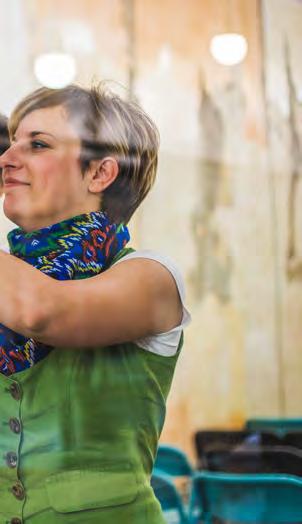
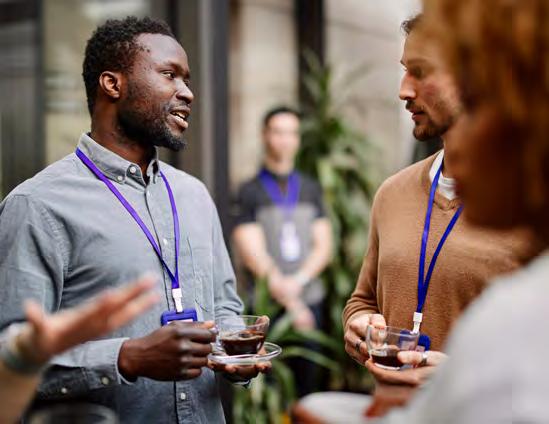
36 Excellence in Practice 2022 | Atos / Harvard Business Publishing
Excellence in Practice 2022
Atos / Harvard Business Publishing
At every phase of the journey, the dedicated HBP moderator drew out insights. Whether conducting formal debriefs of simulations or case studies or analysing discussion boards and chat logs, she served as the red thread that helped to maximise the learning.
This approach enabled managers to develop a more strategic mindset. By understanding Atos’ strategy and market thought leadership, they improved their decision-making and communications abilities. Through increased self-awareness, these managers became more accountable for their own behaviours and decisions. In turn, they held others more accountable. Through this expanded perspective, they took on a greater responsibility for shaping Atos into a flatter, more caring, agile, and collaborative culture.
Trusted Partnership
The Atos HBP partnership was built on shared values of transparent communication, agile mindset, and commitment to impact discussions.
After each cohort, the Atos HBP team evaluated performance and made design or content changes for the next cohort. From module to module, LIDA was continually refreshed to reflect updates to Atos thought leadership and/or strategy, newly published external thought leadership, and feedback from participants and their managers. This attention to excellence generated the highest engagement rates Atos has ever seen in a virtual programmeme: 88%. Furthermore, because After Action Reviews were built into the partnership, LIDA did not suffer setbacks during either the pandemic or a CEO change.
The Impact Exceeded Expectations
The exceptional results of LIDA are a function of a programme design that clearly defined strategic priorities and delivered outsised impact.
Atos managers developed the leadership capabilities required to lead through digital disruption, impacting their direct reports, their teams, and their clients. At Atos today, alumni are demonstrating more confident, strategic behaviours to lead Atos into the digital future.
Highest engagement rates
Atos has experienced in a virtual programme

37 EFMD Global Focus_Iss.3 Vol.16 www.globalfocusmagazine.com
88%
In terms of talent management measures, 23% of LIDA alumni have earned promotions, through the first six cohorts. This change is particularly noteworthy given that LIDA was not a high potential talent programme. Attrition among LIDA alumni is 6 percent as compared to 16.55% organisation-wide. And the gender ratio is 6% more than the overall Atos ratio.
Before embarking on the LIDA journey, each participant identified one or two changes that they needed to make to become the leader that they wanted to be. Nearly three-quarters (74.6%) made behaviour changes in one or both areas.
Managers of participants unanimously felt strongly that LIDA was beneficial and that participants had made progress across the areas addressed by the programme. A majority saw positive behaviour change in how their direct reports were thinking and working.
The quality of participation (89%), attendance (88%) and satisfaction (4.3/5.0) has remained consistent from cohort to cohort, which is a testament to positive awareness of the programme and exceptional relevance.
The Long Game of Culture Change

While the LIDA programme does not take sole credit for wider organisational shifts, it contributed to the improved leadership index through the Great Place to Work survey. Over three years, the global leadership score improved 13 points, with a 10 point improvement in “My manager” scores.
LIDA was conceived as a way to support dual digital transformation. Through its success, it became a key part of Atos’ talent offerings. Because alumni of LIDA were leading and showing up in a different way, LIDA became a core part of the organisation’s talent portfolio.
In addition, the framework and structural topics of LIDA have been applied to other internal leadership and managerial programmes such as ‘Team Leader Curriculum’ for first-time managers.

Culture change is a long-term process. LIDA set in motion a shift in culture that is enabling Atos to succeed through transformation.

38 Excellence in Practice 2022 | Atos / Harvard Business Publishing
Kuehne+Nagel / LIW
Culture transformation to drive performance in a changing world

Traditionally, the logistics industry has been male-dominated, transactional and hierarchical. The keys to success were expertise, process, precision and timely execution. Kuehne+Nagel has excelled in the industry for the last 130 years and continues to be a leader in the sector, providing supply chain solutions to its customers globally.
In recent years it was becoming increasingly clear that the stability that could formerly be relied on was being replaced by rapid change and complexity. New factors included environmental demands, digitalisation and labour market changes. Many logistics organisations struggled to adapt, and when the COVID-19 pandemic hit the pressure intensified.
In 2019 Kuehne+Nagel embarked on an organisational transformation, a journey towards being the best company to work for and the best company to do business with. This journey necessitated a cultural change, putting the employee and the customer at the heart of all their activities. A series of initiatives started, introducing innovative activities whilst safeguarding the core strengths of Kuehne+Nagel.
Leadership and Culture
Kuehne+Nagel’s leaders recognised that the culture change they wanted to deliver would need to be driven by a new style of leadership, that ‘what got us here would not get us there’. The challenges of increasing complexity, uncertainty and the dramatic impact of the COVID-19 pandemic on supply chains created a ‘perfect storm’ to test the leadership skills and structures, innovation and agility within Kuehne+Nagel.
Kuehne+Nagel engaged LIW to help them develop a continuous learning organisation and to energise the culture transformation by evolving the TRANSFORM programme. From the start, they decided to role model the behaviours they wanted to develop in the business, working in an agile and experimental way, with regular reviews to reflect, learn and adapt the approach to constantly optimise the learning experience.
39 EFMD Global Focus_Iss.3 Vol.16 www.globalfocusmagazine.com
Excellence in Practice 2022

40 Excellence in Practice 2022 | Kuehne+Nagel / LIW
Excellence in Practice 2022
Kuehne+Nagel / LIW
The Programme
Together the Kuehne+Nagel and LIW teams defined the new style of leadership and set out the objectives in a Design For ImpactTM document which became the reference point for all their design work.
“The success of Kuehne+Nagel depends on great leaders who encourage and inspire transformation, develop a culture of customercentricity and build a supportive environment for high-performing teams and individuals.”
Gregor Herr, Programme Lead within Kuehne+Nagel
The team started working first on a reimagining of the core development programme for senior leaders, TRANSFORM, which had been running inside Kuehne+Nagel for 10 years. They needed to realign the content and delivery to match the leadership aspirations of the cultural transformation defined in four objectives: fostering self-awareness, to inspire and engage, achieving results with and through others and developing an entrepreneurial mindset.
Virtual delivery:
Such a successful implementation that the programme has remained virtual even as the pandemic declines
Agile approach built around real work:
A ‘doing to learn’ approach put learning into the workplace rather than application being an afterthought
Bite-size learning:
Combined with agile experimental approach apply the learnings in the real world
Peer support:
In addition to external coaching, the peer support network built deep leadership capability inside the organisation
Fig 1: The Transform Programme
They identified four key elements which would define the programme and enable leaders to learn and experiment in real time, in order to embed new habits within the daily work.
The Transform Programme
When the pandemic caused a lockdown in many countries, the board of Kuehne+Nagel committed to continue to invest in leadership development to further the culture change.
The TRANSFORM programme evolved from its original face-to-face format of workshops, learning sprints and coaching, into a radio format with virtual workshops and microlearning radio shows, with an emphasis on experimentation in day-to-day work, supported by small group ‘pod’ sprints, and coaching. The show was fast-paced, but with important time for reflection. The frequency of connection was increased with informal ‘coffee connects’ and peer coaching to support all participants in building relationships despite being abruptly disconnected from their offices.
10The team started working first on a reimagining of the core development programme for senior leaders, TRANSFORM, which had been running inside Kuehne+Nagel for 10 years
TRANSFORM programme
41 EFMD Global Focus_Iss.3 Vol.16 www.globalfocusmagazine.com
The success of Kuehne+Nagel depends on great leaders who encourage and inspire transformation, develop a culture of customer-centricity and build a supportive environment
The radio format offered a welcome change for participants feeling ‘zoom fatigue’ from their day-to-day work. And they were encouraged to go for a walk or sit somewhere away from their desk while they listened and participated, in order to get a fresh perspective.


During the ‘hot house’ high intensity workshop the participants had the opportunity to gain insights on theory and practical learning through a custom simulation role play, working both individually and in groups to reflect and learn.
Senior Sponsorship and Alignment
The programme was sponsored by CHRO Lothar Harings and supported by the board of Kuehne+Nagel. The leadership team at Kuehne+Nagel have been clear that the transformation agenda is owned by the business, not by HR or just the senior leadership team. As a result, the solution is strongly aligned to the business and the real challenges and opportunities faced by participants, for example the integration of a real business project, guest speakers from the business playing an active role in sessions, and individual and peer coaching supporting application. This focus enables participants to connect their learnings to their real business role.
42 Excellence in Practice 2022 | Kuehne+Nagel / LIW
Excellence in Practice 2022
Kuehne+Nagel / LIW
Results
The programme had some dramatic impacts as well as delivering some more subtle changes to the participants and their teams. The overwhelming message from leaders was of a recognition of the importance of people management in their role. This may not seem dramatic, but this was an organisation which had for generations been driven by transactional operations – getting things done. These leaders had been focused on the end point more than the journey, yet through this programme they embraced a new approach and experienced the huge benefit of being released from being ‘the boss who knows all the answers’ to becoming the leader who coaches and supports others, who listens to all the voices in the room and shares decisionmaking and accountability.
Business outcomes have been significant and in line with the objectives of the programme:

• increased employee and customer engagement
• increased focus on customer service
• improved productivity
• development of a coaching culture
• increased revenues and profitability
• greater accountability and decisionmaking pushed deeper into the organisation
“While the programme of TRANSFORM is over, the journey of transformation continues for all of us and that’s a very exciting prospect” Transform participant
Participants recorded a 62% uplift in achievement of action plan goals due to the learning and coaching they received through TRANSFORM.
The programme recommendation scores were high and continued to improve over time as the design and delivery team continually reviewed, improved and enhanced the experience.
Individual stories reflect this leadership transformation: the Head of Sales Control in Europe transformed his team into a Centre of Excellence while supporting team members who were fearful of job cuts and an uncertain future. He used the learnings from TRANSFORM to build a culture of trust and collaboration, shared key models to engage the team in defining their own future and was rewarded with higher productivity and staff who became accountable for delivering results and were happy at work.
“At that moment the atmosphere changed and we went from 7x me to 1x me – we actually became a team” Transform participant
Participants recorded a 62% uplift in achievement of action plan goals due to the learning and coaching they received through TRANSFORM
43 EFMD Global Focus_Iss.3 Vol.16 www.globalfocusmagazine.com
62%
Reflections
One powerful reflection is that when faced with an unexpected and massive shock in the form of a global pandemic which intensified pressure on the global logistics industry this organisation did not retreat from its leadership development commitments. Instead Kuehne+Nagel doubled down on its learning agenda, seeing that empowering their leaders was the most effective way to enable the business to survive and thrive in the face of this threat.
The design partnership of Kuehne+Nagel and LIW embraced the challenge and were able to develop a solution which was innovative, inspiring, and engaging; enabling participants to connect and learn in a virtual setting, not previously envisaged.

Furthermore, even in a busy organisation, making time for experimentation and reflection always pays back in terms of personal growth, with employees developing as leaders who can support and enable the growth of their teams to deliver business impact. There can also be plenty of fun along the way too!

44 Excellence in Practice 2022 | Kuehne+Nagel / LIW
0102030405060708090100 Recommendation I would recommend this programme to other leaders in my organisation C5/C6C3/C4C1/C2 Fig 2
in Practice 2022
ACIAR / University of South Australia (UniSA) / Australian National University / ICRISAT
Transforming small-scale irrigation systems from underperformance to sustainability

About 80% of food in sub-Saharan Africa (SSA) is produced by small-scale farmers. Some of these are within small-scale irrigation schemes, which are managed by irrigator associations or irrigator/government partnerships. These associations are essentially not-for-profit social enterprises, which are responsible for the operation and maintenance of the irrigation infrastructure. However, small-scale schemes have largely failed due to a range of challenges: requirements to grow low-value staple crops; exposures to crop failure; poor connections to input and output markets; and resulting high production costs. Consequently, farmers have been unable to pay water fees and had limited incentive to participate in scheme maintenance. Hence, schemes fell into disrepair, water supply became uncertain, and plots were underutilised.
The small-scale irrigators and their associations have limited capacity to address these challenges. Traditionally, governments, donors, and NGOs have responded by refurbishing or rehabilitating schemes without considering the broader and complex socioeconomic context and the fundamental need for schemes to be profitable. Hence, many schemes have entered a cycle of refurbishmentdegradation-refurbishment.
Drawing on learning and development research, a partnership of seven organisations from Australia and Africa developed a theory of change to address these complex challenges and transition underperforming irrigation systems to sustainable systems by transforming the small-scale farmers to profitable farm businesses (for a thorough overview see volumes 33 and 36 of the International Journal of Water Resources Development). The theory of change has been tested through the project ‘Transforming Irrigation in Southern Africa’ (TISA), which uses a two-pronged intervention approach: Agricultural Innovation Platforms (AIPs) and soil and nutrient monitoring tools (Figure 1). The project partnered with farmers, irrigator associations, extension officers, local stakeholders and local, district and national government institutions. It worked initially with six irrigation schemes in Tanzania, Mozambique, and Zimbabwe (2013-17). Based on the success of the approach, it was out-scaled (2017-22), and now works with 15,500 farm businesses and 42 associations and has up-scaled to the regional and national levels.
PHOTO COURTESY ANDRÉ
45 EFMD Global Focus_Iss.3 Vol.16 www.globalfocusmagazine.com
Excellence
F. VAN ROOYEN
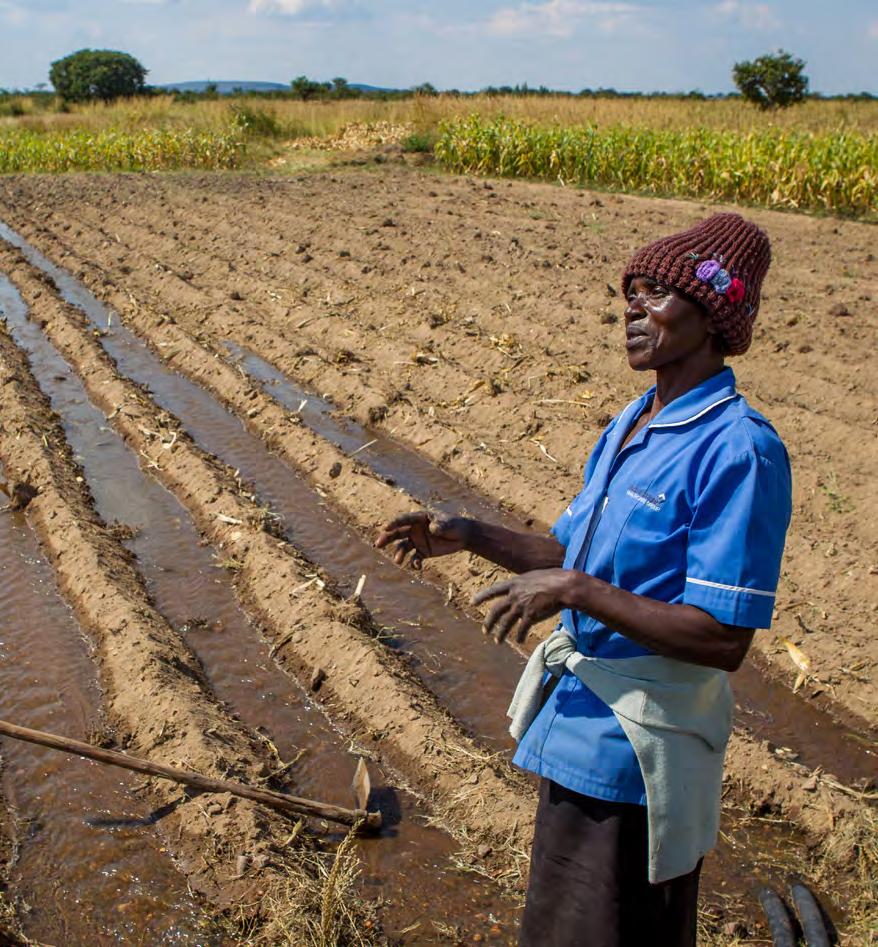
46 Excellence in Practice 2022 | ACIAR / University of South Australia (UniSA) / Australian National University / ICRISAT
Excellence Increases adoption of tools
in Practice 2022
ACIAR / University of South Australia (UniSA) / Australian National University / ICRISAT
Agricultural Innovation Platforms
Increases confidence in AIP, stimulates engagement and innovation
Underperforming irrigation systems
High-value crops and improved market links, processing and transport
Soil monitoring tools
Access to improved varieties and highquality inputs
Direct influence on profitability
47 EFMD Global Focus_Iss.3 Vol.16 www.globalfocusmagazine.com Stimulates demand for information
The AIPs function as spaces for innovation and learning. A facilitated process brings key stakeholders together to identify a vision for each scheme and the barriers to achieving the vision, including poor yields and profitability. Stakeholders then determine the best strategy to overcome the barriers and which stakeholders are willing to and most capable of implementing the strategy. Importantly, farmers are empowered in the process, and networks are built for knowledge sharing. The following are examples of AIP-initiated projects that have resulted in increased profitability:
Learning about nutrients and moisture management improves decision-making
Increased yield
Increased profitability
1. Introduction, and demonstration in test plots, of new crops and varieties: e.g. in Tanzania, new rice varieties and planting densities were introduced and agreement obtained between the farmers to grow fewer varieties to facilitate bulk sales.
2. Introduction of farmers field books for farmers to record field operations, readings from the tools, yields, input purchases and revenue. At the end of the season, farmers then learnt how to compute gross margins.
A space for learning and innovation
The two-pronged approach facilitates an ongoing cycle of improvement
Farmer-centered learning and participatory problem solving
Feedback loops that reinforce the impact
Sustainable irrigation systems
Fig 1: The two-pronged TISA approach
3. Connecting farmers to markets for cheaper and better-quality inputs and better prices for outputs: e.g. in Mozambique an agricultural supplier established a mobile shop to visit the schemes and in Tanzania, the local council hired an inspector to test the quality of inputs sold by the main suppliers.
4. Participatory mapping of the schemes. This clearly and publicly established the location and size of farmers’ plots, reducing conflicts over water, and increasing the willingness to pay fees and undertake maintenance work. In Tanzania, the mapping enabled the issuing of certificates of customary ownership, which banks have accepted as collateral for finance.
5. Facilitating collaboration between farmers and governments and NGOs to fund value-adding facilities: e.g. in Zimbabwe an NGO donated an oil press and seed/bean packaging machine, and governments and farmers jointly built a rice storage facility and a rice mill in Tanzania.
A common barrier identified across the schemes was poor water management and low crop productivity. As schemes supply water on a fixed roster, irrigators water when water is supplied, whether it is needed or not. This causes leaching of fertiliser and reduces crop yields. Hence, soil and nutrient monitoring tools were introduced to facilitate farmer learning about soil moisture and nutrient dynamics for improved irrigation decision-making.
The farmers received two easy-to-use tools, which provided results that could be easily understood by semi-literate farmers:


i) Chameleon™ Soil Water reader and an array with three sensors to measure soil tension, i.e. how hard the roots have to suck to extract moisture (Figure 2); and
ii) FullStop™ Wetting Front Detector (WFD) to measure soil nitrate and salt levels (Figure 3).
PHOTOS COURTESY
48 Excellence in Practice 2022 | ACIAR / University of South Australia (UniSA) / Australian National University / ICRISAT
ANDRÉ F. VAN ROOYEN
Excellence in Practice 2022
ACIAR / University of South Australia (UniSA) / Australian National University / ICRISAT
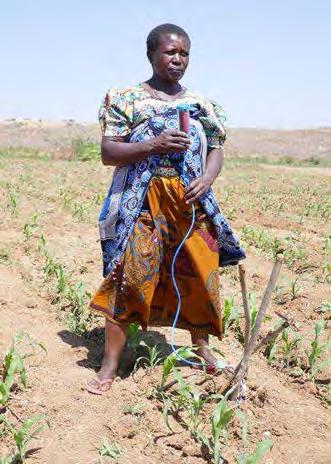
20Twenty farmers in each scheme installed a sensor array and two WFDs in their plots, and they shared one reader. The sensors were buried in the ground in the top, middle and bottom of the root zone
Twenty farmers in each scheme installed a sensor array and two WFDs in their plots, and they shared one reader. The sensors were buried in the ground in the top, middle and bottom of the root zone. An above-ground plug connects them to the reader, which has a coloured light for each sensor with:

• blue indicating wet soil;
• green indicating moist soil; and
• red indicating dry soil.
The WFDs are buried at approximately onethird and two-thirds of the depth of the crop’s rootzone (Figure 3). As water moves down the soil profile, it is funnelled into one or both devices. When sufficient moisture enters the device, the indicator at ground level rises. This informs the farmer that a water sample has been captured, which can be extracted using a tube and syringe and tested for nitrates and salinity.
 Fig 2: Chameleon™ reader and soil moisture sensors (Photo: VIA Farm website) and farmer demonstrating the use of the Chameleon (Photo courtesy Karen Parry)
Fig 3: Placement of two FullStop™ devices (Photo: VIA Farm website)
Fig 2: Chameleon™ reader and soil moisture sensors (Photo: VIA Farm website) and farmer demonstrating the use of the Chameleon (Photo courtesy Karen Parry)
Fig 3: Placement of two FullStop™ devices (Photo: VIA Farm website)
49 EFMD Global Focus_Iss.3 Vol.16 www.globalfocusmagazine.com
LOOP A: Learning from soil monitoring tools
More than 70% of households know what the tools are used for
Scheme conflict decreases
Water use decreases
Amount of irrigation decreases
LOOP B: AlP augments learning from the tools and addresses a diversity of constraints (e.g, inputs, markets & institutions)
Main crop yield increases of more than 25% for more than 60% of households
More than 50% of households have changed the frequency of irrigation
More nutrients retained in the rootzone
Labour for irrigating decreases
Interval between irrigation events hasincreased by 1.4 to 9days
Labour invested in weeding increases
Soil water availability increases
Nutrient pool increases
Yield increases
Income increases New/improved crop varieties
More inputs purchased
Livelihood opportunities increase Household & scheme changes
Income sources have changed for 11%-66% of households, and close to 50% or more households have improved off-farm income
The tools enabled farmers to avoid water stress, waterlogging and fertiliser leaching. Farmers quickly discovered that when the Chameleon™ was constantly blue in the rootzone then the soil-water extracted from the deepest WFD had high levels of nitrates. They learnt that they had overwatered and lost expensive fertiliser, as it was now inaccessible to the plants. Within six months, farmers had significantly reduced the number and duration of irrigation events, whilst yields increased and learning spread. After nine years, up to 90% of farmers have changed their irrigation practices even though only twenty farmers per scheme were initially given the tools. Critically, the yield improvements would not have translated to increased income without the market-oriented outcomes and learning facilitated by the AIP.
The two-pronged approach has initiated an iterative virtuous cycle of development, transforming small-scale farmers into sustainable
Of households who changed income, between 43% and 94% have improved farm income
Decreases in conflict over access to water at household and scheme scale Improvements in food security, education and the home Increases in hiring of non-family labour and spending in the community Increased willingness to pay fees and participate in maintenance and collective action (e.g. fencing, input purchase, markets)
farm businesses (Figure 4). The approach has reduced water use, the time spent irrigating, and conflicts over water among farmers, within households and with downstream users. Yields, farm profitability and non-farm incomes have all increased. In turn, farmers’ willingness and ability to pay water fees has increased and they are participating more in scheme maintenance. This has created viable irrigator associations and more sustainable irrigation systems.
TISA has identified significant opportunities—for African governments, donors, and NGOs—to address the challenges facing small-scale irrigation schemes. Only by accepting the complex nature of these challenges, and facilitating a shared vision and collective problem-solving coupled with farmer-centred learning about irrigation management, can farms become profitable and able to support the development of self-sustaining irrigation systems.
After nine years, up to 90% of farmers have changed their irrigation practices even though only twenty farmers per scheme were initially given the tools
Fig 4: Iterative virtuous cycle of increased production and income for TISA scheme
50 Excellence in Practice 2022 | ACIAR / University of South Australia (UniSA) / Australian National University / ICRISAT
90%
in Practice 2022
UK Fire and Rescue Services / Warwick Business School, The University of Warwick

From heroic leader to adaptive leadership
51 EFMD Global Focus_Iss.3 Vol.16 www.globalfocusmagazine.com
Excellence
Every day firefighters are risking their own lives to save people. To many, this appears to be the very definition of being a hero and so when they climb the metaphorical ladder into leadership roles, it may seem perfectly natural to feel they should carry on as a heroic leader, seemingly with all the answers and an innate ability to command and inspire.
This macho image - often popularised in the media - is outdated and far removed from the reality of leadership in a 21st century Fire and Rescue Service.
Instead, the leaders of today need to be compassionate and caring, multi-skilled and agile, spending time building relationships, interacting with a multitude of diverse stakeholders, while at the same time lobbying for resources, engaging in political discussion and creating strategies to support safety and well-being across the communities they serve.
Indeed, any organisation with an outdated focus on a command-and-control leadership style will miss out on the opportunity to develop those most suited to lead a top performing public service.
Fire and Rescue Services draw their employees from across the diverse communities they serve and so need to have a focus on ensuring their leadership teams are properly representative of these communities.

In a world becoming increasingly volatile and uncertain, relying on a heroic leader trained to focus on a style based on command and control, is one doomed to fail.
That environment has become increasingly complex since Warwick Business School joined forces with the National Fire Chiefs Council in 2008 to create the Executive Leadership Programme (ELP)
As Des Prichard, Director for People and Organisational Development at the Chief Fire Officers Association and former Chief Fire Officer, of East Sussex Fire and Rescue Service, says: “It had been recognised through discussion with local authority political leaders, that applicants for the most senior leadership roles in the UK Fire and Rescue Service, while demonstrating intellect and knowledge, appeared to lack self-awareness allied to a gap in their strategic understanding of the complexities involved in leading a 21st century public service organisation, alongside a lack of political acuity in what was an evolving VUCA (volatility, uncertainty, complexity and ambiguity) environment.”
That environment has become increasingly complex since Warwick Business School joined forces with the National Fire Chiefs Council in 2008 to create the Executive Leadership Programme (ELP).
The UK has suffered the Great Recession, a decade of austerity that has caused growing inequalities, Brexit and perhaps most complex of all, a global pandemic now followed by a cost-of-living crisis.
With social media and the constant spread of misinformation across the digital sphere fire chiefs need to be adept at communicating and being on top of the latest issues in order to lead effectively.
The ELP has helped fire chiefs gain the self-awareness, political understanding and agility to deal with such turbulence.
PHOTO
52 Excellence in Practice 2022 | UK Fire and Rescue Services / Warwick Business School, The University of Warwick
COURTESY UK FIRE AND RESCUE SERVICES / WARWICK BUSINESS SCHOOL, THE UNIVERSITY OF WARWICK
Nick Barclay, who helped put the ELP together as Client Director at Warwick Business School, says: “The intention was to enable those aspiring to senior roles to be able to move away from a rules-based mindset that characterised their operational training, to a VUCA environment which confronts senior personnel in all organisations.
“There was a strong sense that a more interactive and challenging programme was needed.”
More than 300 fire chiefs across 16 cohorts have gone on this cultural journey for the UK Fire and Rescue Service and the result has been staggering.

From struggling to find suitable candidates for leadership roles, the programme has seen a 300% increase in suitable applicants for strategic positions, with a 19% increase in women applying for the programme since 2008.
Mick Crennell was one of the programme’s early recruits as an Area Manager at Hampshire Fire and Rescue Service and believes the ELP has been integral in his rise up the ranks to his current position of Chief Fire Officer at Avon Fire and Rescue Service.
“It was definitely challenging, but also very enjoyable and different from any programme or process I had previously attended,” says Mick. “It was very personal and challenged me to think about me as a leader very early, which was indicative of what the programme was all about – it certainly didn’t stop there.
“I found this very refreshing, as mirror-gazing personal reflection and personal scrutiny as a leader was a new concept for fire officers in those days.
UK Fire and Rescue Services / Warwick Business School, The University of Warwick
53 EFMD Global Focus_Iss.3 Vol.16 www.globalfocusmagazine.com Excellence in Practice 2022
“I have actively supported the programme and recommended it to several of my team. I have coached and mentored them throughout their development and it gives me great personal pleasure to see them grow and develop into great leaders – many of whom are now executive leaders themselves.
“All of this can only improve our service and how we deliver our services to our communities, keeping them safer and making our organisations stronger.”
One of the features of the programme has been the creation an eco-system of ‘critical friends’ offering support and advice long after the course has finished. These Action Learning Sets (ALS) allow fire chiefs to consult with colleagues on problems and issues that all leaders in the service are likely to face but can’t talk about with those they are leading.

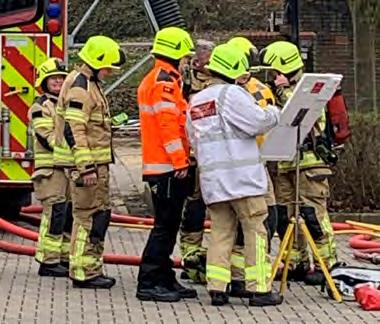

“Our ALS still meets,” says Mick. “Learning from others’ experiences and having a safe environment to share experiences has been invaluable.
“As a fledgling strategic leader at the time the programme definitely enabled me to grow my personal network beyond my home service and local region.
“It has opened up a world of possibilities and opportunities for collaboration, co-production and sharing innovation. It also provides a trusted and safe environment of peers to enable professional discussion, sense-checking and personal support.
“I would describe the ELP as a personal programme and not a course. It will be a personal journey of discovery and growth with many facets.
PHOTOS COURTESY UK FIRE AND RESCUE SERVICES / WARWICK BUSINESS SCHOOL, THE UNIVERSITY OF WARWICK
54 Excellence in Practice 2022 | UK Fire and Rescue Services / Warwick Business School, The University of Warwick
Excellence in Practice 2022
UK Fire and Rescue Services / Warwick Business School, The University of Warwick

Leaders need to take people ‘with them’ rather than to do leadership ‘to them’
“The academic side of the programme is, of course, very valuable, but so is learning from other strategic leaders who have experiential learning to share; gaining access to external speakers, excellent tutors and trainers, the beneficial effects of the ALS and the alumni.”
With its emphasis on moving fire chiefs away from the deep-rooted ‘command and control’ style to a more collaborative style of leadership, the ELP has been vital in bringing more women into senior leadership roles in the UK fire service.
As Rebecca Bryant, who recently retired as Chief Fire Officer of Staffordshire Fire and Rescue Service after 29 years as a firefighter to take up a role at WBS as Associate Professor and facilitator on the ELP, says: “Leadership is a practice and not a position.”
Leaders need to take people ‘with them’ rather than to do leadership ‘to them’.
Joanne Bowcock, Deputy Chief Fire Officer at Oxfordshire County Council, says the ELP helped her see leadership in a different light and adopt a new method for decision-making.

“We use a model called the Incomplete Leader to acknowledge that the whole is a sum of the parts that makes the team,” says Joanne. “It sounds obvious but in our decision-making we don’t adopt the hierarchy of the chief principal officers that make all the decisions. It’s very much done on a consensus through the senior leadership team.”
Many of the UK’s 52 fire services have now added the ELP or similar programme as a ‘desirable’ in the person specification when advertising for senior leadership roles, while Sue Hopgood, Director of Leadership and Organisational Development at the Fire Service College, has gone on to set up the Cross Sector Leadership Exchange connecting leaders in the country’s fire service, police and National Health Service (NHS) to improve leadership across the public sector.
55 EFMD Global Focus_Iss.3 Vol.16 www.globalfocusmagazine.com
Many of the UK’s 52 fire services have now added the ELP or similar programme as a ‘desirable’ in the person specification when advertising for senior leadership roles

Gavin Tomlinson, Chief Fire Officer at Derbyshire Fire and Rescue, points out that six of the officers on his senior leadership team have done the ELP.
“Without a doubt it has helped me within my career,” says Gavin. “Not the badge or qualification, but the learning, networking, understanding myself more and taking a different approach to leadership as my career has progressed.

“And the programme journey is still continuing. I am still in contact with many of my programme cohort. The network of friends and colleagues has been the best part for me.
“I have adapted how I lead and undertake much of my decision-making since the programme. I am certainly more reflective, allowing others to speak and express views first. I focus on the development of others and have supported many of our leadership team to attend the programme over the years.
“I would say to anybody thinking about doing the ELP that it will change the way you think, approach problems, look for support and it will enhance your role in senior leadership. It also provides support and a channel to share and discuss things, options which aren’t always fully available within your own service as it can be a lonely place at times and that support is vital, especially for your own health and well-being.
“It was probably the best course I have ever done - and I have done lots.”
PHOTOS COURTESY UK FIRE AND RESCUE SERVICES / WARWICK BUSINESS SCHOOL, THE UNIVERSITY OF WARWICK
56 Excellence in Practice 2022 | UK Fire and Rescue Services / Warwick Business School, The University of Warwick
52
Call for
Excellence in Practice
The EFMD Excellence in Practice (EiP)
recognise outstanding and impactful client-supplier
in the domains of Leadership, Professional, Talent and Organisational
Case studies can be submitted by an organisation either together with its in-house Learning & Development unit or with external L&D providers.
The winners are selected based on the review of four key areas: a properly documented challenge, an effective partnering commitment, the appropriate L&D initiative, and a proven business impact.
Excellence in Practice Award (EiP)
https://efmdglobal.org/EIP

Gold Winners since 2018: Africa Business School (ABS) / Alliance Manchester Business School / ArcelorMittal / Association of Entrepreneurship Development “SKOLKOVO Community” / Atos / A.T. Kearney / Audi UK / Australian Centre for International Agricultural Research (ACIAR) / Australian National University (ANU) / Bob Aubrey Associates / Brand-and-Story / Capgemini France / CEDEP Global Executive Education Club / Chola MS General Insurance / Coverdale / Daimler / DSM / Deloitte Consulting / EF Education First / emlyon business school / Endo Pharmaceuticals / Epiqus / ESMT Berlin / Fundação Dom Cabral (FDC) / Gordon Institute of Business Science (GIBS) / Hanken & SSE Executive Education / Harvard Business Publishing / Henley Business School / IMD / INSEAD / International Crops Research Institute for the Semi-Arid Tropics (ICRISAT) / Live for Good / LIW / London Business School / Monocities Development Fund / Moscow School of Management SKOLKOVO / Mindset / Murugappa Group Management Development Centre / OCP / Pertamina / Randstad / Siam Commercial Bank (SCB) / Standard Bank / Telstra / Tjitra and Associates Consulting / TRATON Group / Tribal Resources Investment Corporation (TRICORP) / Unilever Brasil Industrial / University of Cape Town, Graduate School of Business / University of South Australia (UniSA) / University of Victoria, Gustavson School of Business / Valmet / Vlerick Business School
We have valued the opportunity to reflect and to articulate the impact of the leadership development at LUFHT (Liverpool University Hospitals) and the value of the relationship between our two organisations which has helped realise that impact. So, thank you to you all at EFMD for a process that enables this to happen. Looking forward to continuing to build “excellence in practice” together!
Anthony Sturgess Director School of Leadership and Organisational Development, Liverpool Business School
entries 2023 Design by www.jebensdesign.co.uk EFMD aisbl Rue Gachard 88 –Box 3 1050 Brussels, Belgium Phone: +32 2 629 08 10 F ax: +32 2 629 08 11 Email: info@efmdglobal.org
Awards
partnerships
Development
Next Deadline for Submission 15 March 2023 For more information on the assignment, submission guidelines and FAQs visit
Information session webinars Monday 12 December 2022: 6:00pm CET Tuesday 10 January 2023: 12:00pm CET Thursday 2 February 2023:1:00pm CET For registration: https://events.efmdglobal.org Contact eip@efmdglobal.org








